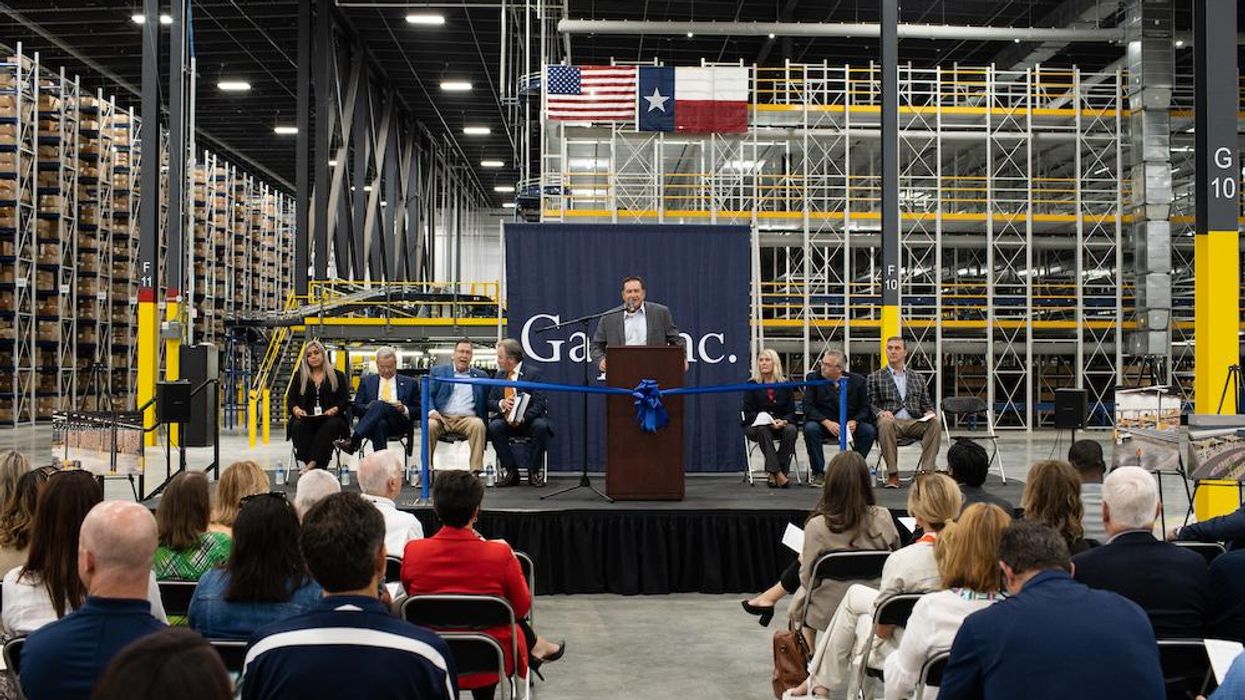When operating at scale, systems-level improvements make all the difference to margins and metrics for success. This means growing will require solving problems in routine parts of the business, and processes that are repeated over and over.
In ecommerce, these optimizations can come in the shopping cart where consumers make decisions about whether to check out, or in the fulfillment network where efficiency can bring advantages in speed.
As retailers are doubling down on growing their own ecommerce channels, they are seeking out AI and automation to make the kinds of process changes that can help them stand out to customers, and get more profitable in the meantime.
Here’s a look at three retailers that are adopting new technologies:
Levi’s leverages machine learning

Levi's logo. (Photo by Austin Burke on Unsplash)
Ecommerce provides choice, but the work to sync up what consumers want with a retailer’s processes to get it to them creates layers of complexity within a supply chain.
At Levi Strauss & Co. a new platform is using AI to help the fulfillment process fit the customer experience, inventory and the costs involved in the steps to ship an item out.
Called Business Optimization Of Shipping and Transport engine, or BOOST, the system can locate specific items within Levi’s assortment, even if they are not within the ecommerce-specific inventory.
“What BOOST is optimized to do is fulfill ecommerce orders more effectively,” said Louis DiCesari, Global Head of Data, Analytics, and AI. “When somebody goes online to make a purchase, we have distribution centers where we keep inventory specifically for those orders. One of the things we can do with BOOST is broaden that search for available product to include stores and allow the engine to choose the best fulfillment option for both the consumer and our bottom line.”
Levi’s, which is embracing a DTC-centered strategy as it seeks to grow digital sales, offered the example of a consumer who wants to purchase a trucker jacket in a particular wash. The jacket may be out of stock in a distribution center, but BOOST can locate the jacket at a store near the consumer, and make it available.
The system also seeks to resolve the issue of split shipments, in which customers receive more than one package when ordering multiple items from Levi’s. It considers shipping, packing and labor into its calculation, while finding a path that gets an order to the consumer in the simplest form.
“The beauty of it is that we’ve been able to automate all of this so it’s really a decision-making engine, not just an information engine, allowing our teams to focus their efforts on other value-adding initiatives,” DiCesari said.
Currently, the system accounts for 40% of eligible ecommerce orders. Levi’s is expecting that number to be 100% by Black Friday.
Gap grows fulfillment

Inside a Gap Customer Experience Center. (Courtesy photo)
At Gap Inc., holiday preparation includes expansion in the fulfillment network that puts automated systems alongside people who are working to ship out orders to customers.
The apparel company in August opened an 850,000-square-foot Customer Experience Center in Longview, Texas. It is outfitted with robotics systems and automation technology that is designed to optimize employee processes for speed and efficiency. It also expands processing capacity in the fulfillment network by one million units per day, bringing total capabilities to four million units per day.
“Peak season is now, and we know with peak season comes increased demand, increased hiring and increased opportunity to delight our customers,” said Kevin Kuntz, Head of Supply Chain at Gap Inc. “As we continue to deliver on our growth strategy, the launch of our Longview Customer Experience Center is another opportunity to further unlock the power of technology and automation, evolve the way we work, diversify our business, and deliver an exceptional experience for customers.”
The expansion comes after Gap Inc. expanded another Customer Experience Center in Fishkill, NY, adding technologies including automated receiving, multi-level pick modules, enhanced returns processing capabilities and new automated storage retrieval systems.
Opening up the network
With the supply chain enhancements, Gap is also seeking to make its network available to other retailers. It recently launched a new initiative called GPS Platform Services, offering logistics and fulfillment capacity to DTC and B2B businesses.
Drawing on a network that includes 13 distribution centers and a workforce of more than 9,000 people, capabilities of the service include ecommerce fulfillment, storage, warehousing, packing, shipping and returns processing.
With this new offering, Gap joins a group of retailers making logistics and fulfillment capabilities available to other retailers. Amazon has a massive fulfillment network and is making plans to deliver directly for other retailers, while Shopify is building a fulfillment network of its own that was accelerated by the recent acquisition of Deliverr. Among fellow retailers that are synonymous with the mall, American Eagle Outfitters also recently launched a network called Quiet Platforms following a pair of supply chain-related acquisitions last year, and has been loud about its intentions to build a group of partners to compete with the largest companies.
Rather than a move to take on others, Gap’s launch may be best interpreted as a sign that in-house fulfillment networks are becoming commonplace among retailers, especially as they seek to build out direct ecommerce channels and take lessons from the supply chain chaos of the last year that showed how there are benefits to owning systems. As ecommerce grows, these networks may even become a requirement for retailers seeking to reach scale. Offering the resources of these networks to others is a recognition of a business opportunity that emerges when one stands up a nationwide network. Gap probably can’t compete with Amazon’s vast logistics operation, but the growing size of the market for delivery as a whole means there is potential to bring some businesses under its wing. That can still be an asset. Plus, it could help the bottom line if there is success. Gap, Inc. reported a decline in sales across its brands in the first quarter, so turning its network into a business opportunity could help. Adding efficiency through automation will only increase the likelihood that its services for others will be profitable.
Dick’s tackles cart abandonment
 Dick's Sporting Goods. (www.flickr.com)
Dick's Sporting Goods. (www.flickr.com)At Dick’s Sporting Goods, AI is helping to address a prevalent disconnect in ecommerce experiences: Shoppers put items in a cart, but don’t ultimately check out.
Through a partnership with predictive shopper engagement platform Metrical, Dick’s has a tool to analyze real-time customer data about a shopping journey, and provide relevant content that encourages engagement and ultimately helps ease the path to purchasing the items placed in a cart.
“Cart abandonment was a key strategic area for us to optimize at DSG,” said Miche Dwenger, VP of ecommerce experience at DSG. “We tried both third party and in-house developed solutions but none delivered the results we wanted because they lacked a predictive capability. Metrical’s predictive AI engine not only improved cart conversions, but its ability to dynamically present personalized content including messages, offers, and other relevant information has enabled us to dramatically improve the customer experience.”
Metrical is also providing tools as Dick’s seeks to create a connected shopping experience across online and offline shopping.
“A key part of improving customer lifetime value is ensuring the digital and physical store experiences complement and support each other seamlessly,” Dwenger said. “As we gain insights, we’re able to make more informed recommendations in both environments. In addition, Metrical works seamlessly with other vendors in our tech stack, including product recs, email marketing, text messaging and more so we are currently exploring opportunities to expand AI’s use into additional applications.”
Going forward, Dick’s wants to expand its use of AI. It believes the predictive capabilities of this technology will ultimately help make shopping experiences more personalized.



 Dick's Sporting Goods. (www.flickr.com)
Dick's Sporting Goods. (www.flickr.com)










